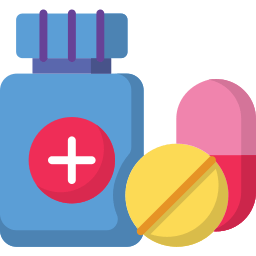Proper pet food portions play a crucial role in maintaining the health and well-being of our beloved furry companions. Just like humans, pets require a balanced diet to thrive and prevent various health issues. In this article, we will delve into the significance of understanding and implementing
appropriate pet food portions. By exploring the impact of portion control on a pet's overall health, we aim to provide pet owners with valuable insights and practical tips to ensure their pets receive the nutrition they need.
Understanding Pet Nutrition
Explaining the nutritional needs of pets
Pets, just like humans, require a balanced and nutritious diet to maintain good health and overall well-being. Understanding the
nutritional needs of pets is crucial in ensuring their optimal growth, development, and longevity.
Macronutrients
Macronutrients are the essential components of a pet's diet that provide energy and support various bodily functions. These include proteins, carbohydrates, and fats. Proteins are vital for muscle development, tissue repair, and the production of enzymes and hormones. Carbohydrates serve as a source of energy, while fats provide energy, insulation, and aid in the absorption of fat-soluble vitamins.
Micronutrients
Micronutrients are essential vitamins and minerals that pets require in smaller quantities but are equally important for their overall health. These include vitamins such as A, B, C, D, E, and K, as well as minerals like calcium, phosphorus, iron, and zinc. These micronutrients play a crucial role in maintaining a strong immune system, promoting healthy bones and teeth, and supporting various physiological processes.
Water
Water is often overlooked but is a vital nutrient for pets. It is essential for digestion, nutrient absorption, temperature regulation, and overall hydration. Providing fresh and clean water at all times is crucial to ensure your pet's well-being.
Discussing the role of balanced diets in pet health
A
balanced diet is key to maintaining optimal pet health. It involves providing the right proportions of macronutrients, micronutrients, and water to meet the specific needs of each pet. A balanced diet ensures that pets receive all the necessary nutrients in the right amounts to support their growth, energy levels, and overall health.
Weight management
A balanced diet plays a crucial role in managing a pet's weight. Overfeeding can lead to obesity, which can have detrimental effects on a pet's health, including joint problems, diabetes, and heart disease. On the other hand, underfeeding can result in malnutrition and deficiencies. By providing the appropriate portion sizes and nutrient composition, a balanced diet helps maintain a healthy weight for pets.
Disease prevention
Proper nutrition is essential in preventing various health conditions in pets. A balanced diet that meets all their nutritional needs helps strengthen their immune system, reducing the risk of infections and diseases. For example, providing adequate amounts of vitamins and minerals supports a pet's immune response, while a diet rich in antioxidants can help combat oxidative stress and reduce the risk of chronic diseases.
Overall well-being
A balanced diet not only supports physical health but also contributes to a pet's overall well-being. Pets that receive proper nutrition are more likely to have healthy skin and coat, improved digestion, and increased energy levels. They are also less prone to behavioral issues and have a better quality of life. In conclusion, understanding pet nutrition is crucial for pet owners to provide their furry companions with a balanced and nutritious diet. By meeting their specific nutritional needs, pets can enjoy optimal health, longevity, and overall well-being.
The Dangers of Overfeeding
Overfeeding pets can have several negative effects on their health and well-being. It is important for pet owners to understand the risks associated with overfeeding and the potential consequences it can have on their furry companions.
Exploring the negative effects of overfeeding pets
Overfeeding pets can lead to a variety of problems, both physical and behavioral. One of the most immediate effects of overfeeding is weight gain. When pets consume more calories than they burn, the excess energy is stored as fat, leading to obesity. Obesity in pets can have serious consequences for their overall health and quality of life. It puts extra strain on their joints, leading to increased risk of arthritis and other musculoskeletal issues. Overweight pets may also experience difficulty breathing, decreased stamina, and reduced mobility.
Health risks associated with obesity in pets
Obesity in pets is not just a cosmetic issue; it can also lead to a range of health problems. Overweight pets are at a higher risk of developing conditions such as diabetes, heart disease, and high blood pressure. These conditions can significantly impact their quality of life and may require long-term management and treatment. Furthermore, obesity can weaken the immune system, making pets more susceptible to infections and diseases. It can also lead to digestive issues, such as constipation and gastrointestinal disorders. Overweight pets may also experience hormonal imbalances, which can affect their reproductive health and overall well-being. In addition to physical health risks, overfeeding can also contribute to behavioral problems in pets. Overweight animals may become lethargic, less active, and less interested in play or exercise. They may also experience mood changes, including increased irritability or aggression. It is crucial for pet owners to understand the dangers of overfeeding and the potential harm it can cause to their pets. By providing proper pet food portions and maintaining a healthy weight, owners can help ensure their pets live long, happy, and healthy lives.
The Consequences of Underfeeding
Underfeeding can have a significant impact on the health of pets, leading to various nutritional deficiencies and their consequences. It is important for pet owners to understand the potential risks associated with underfeeding their pets.
Impact on Pet Health
Underfeeding can result in several negative effects on the overall health and well-being of pets. When pets do not receive an adequate amount of food, they may experience weight loss, muscle wasting, and a weakened immune system. This can make them more susceptible to illnesses and infections.
Nutritional Deficiencies and Their Consequences
Energy Deficiency: Underfeeding can lead to an energy deficiency in pets, causing them to lack the necessary fuel to carry out their daily activities. This can result in lethargy, decreased activity levels, and a general lack of vitality.
Protein Deficiency: Insufficient protein intake can lead to muscle wasting, poor growth, and a weakened immune system. Pets may exhibit signs of weakness, reduced muscle mass, and a higher susceptibility to infections.
Vitamin and Mineral Deficiencies: Underfeeding can also result in deficiencies of
essential vitamins and minerals. This can have various consequences depending on the specific nutrient lacking. For example:
-
Vitamin A Deficiency: Lack of vitamin A can lead to vision problems, poor coat quality, and a weakened immune system.
-
Vitamin D Deficiency: Insufficient vitamin D intake can cause skeletal abnormalities, weak bones, and impaired calcium absorption.
-
Calcium Deficiency: Inadequate calcium levels can lead to weakened bones, dental issues, and muscle spasms.
-
Iron Deficiency: Lack of iron can result in anemia, characterized by fatigue, weakness, and pale gums.
Essential Fatty Acid Deficiency: Underfeeding may lead to a deficiency of essential fatty acids, such as omega-3 and omega-6 fatty acids. These nutrients play a crucial role in maintaining healthy skin and coat, promoting brain function, and supporting a strong immune system. Without an adequate intake of these fatty acids, pets may experience dry, flaky skin, a dull coat, and an increased risk of inflammatory conditions.
Growth and Development Issues: Puppies and kittens are particularly vulnerable to the consequences of underfeeding. Insufficient nutrition during their growth stages can result in stunted growth, delayed development, and an increased risk of skeletal abnormalities. It is crucial for pet owners to provide their pets with appropriate food portions to ensure they receive the necessary nutrients for optimal health. Regular monitoring of a pet's body condition and consulting with a veterinarian can help prevent the negative consequences of underfeeding. [caption id="attachment_5374" align="aligncenter" width="575"]

Determining the Right Portion Size[/caption]
Determining the Right Portion Size
Determining the right portion size for your pet is crucial to ensure their overall health and well-being. Feeding them the appropriate amount of food is essential to prevent obesity or malnutrition. Several factors should be considered when determining pet food portions, including their size, age, and activity level.
Factors to consider when determining pet food portions
When determining the portion size for your pet, it is important to take into account the following factors:
Breed and size: Different breeds have varying nutritional requirements. Larger breeds generally require more food compared to smaller breeds. Consider your pet's breed and size to determine the appropriate portion size.
Age: The age of your pet plays a significant role in determining their portion size. Puppies and kittens have higher energy requirements and may need to be fed more frequently with smaller portions. As they grow older, their portion sizes may need to be adjusted accordingly.
Activity level: The activity level of your pet is another crucial factor to consider. Active and highly energetic pets may require larger portions to meet their energy needs, while less active pets may need smaller portions to prevent weight gain.
Metabolism: Each pet has a unique metabolism, which affects how efficiently they process and utilize food. Some pets may have a faster metabolism and require larger portions, while others may have a slower metabolism and need smaller portions to maintain a healthy weight.
Guidelines for portion sizes based on pet size, age, and activity level
To ensure you are providing the right portion size for your pet, it is helpful to follow general guidelines based on their size, age, and activity level. These guidelines can serve as a starting point, but it is important to consult with your veterinarian for personalized recommendations. Here are some general guidelines:
Pet size: For small breeds, such as Chihuahuas or cats, a portion size of around 1/4 to 1/2 cup of dry food per day may be appropriate. Medium-sized breeds, like Beagles or Cocker Spaniels, may require 1/2 to 1 cup of dry food per day. Larger breeds, such as Labrador Retrievers or German Shepherds, may need 1 to 2 cups of dry food per day.
Age: Puppies and kittens have higher energy requirements due to their growth and development. They may need to be fed multiple times a day with portion sizes ranging from 1/4 to 1/2 cup of dry food per meal. Adult pets generally require two meals per day, with portion sizes adjusted based on their size and activity level.
Activity level: Active and highly energetic pets may require larger portion sizes to meet their energy needs. If your pet is involved in regular exercise or has a high activity level, you may need to increase their portion sizes slightly. Conversely, less active pets may need smaller portion sizes to prevent weight gain. Remember, these guidelines are not one-size-fits-all, and it is crucial to monitor your pet's weight and body condition regularly. Adjust the portion sizes accordingly to maintain a healthy weight and consult with your veterinarian for specific recommendations based on your pet's individual needs.
Tips for Proper Portion Control
Practical strategies for controlling pet food portions
Controlling pet food portions is essential for maintaining a healthy weight and overall well-being of your pet. Here are some practical strategies to help you achieve proper portion control:
Consult with a veterinarian: Before determining the appropriate portion size for your pet, it is crucial to consult with a veterinarian. They can provide guidance based on your pet's breed, age, weight, activity level, and any specific dietary needs.
Read the feeding guidelines: Most pet food brands provide feeding guidelines on their packaging. These guidelines typically recommend portion sizes based on your pet's weight. However, keep in mind that these are general recommendations, and individual adjustments may be necessary.
Use a measuring cup: Measuring cups are invaluable tools for accurate portion control. Instead of eyeballing the amount of food, use a measuring cup to ensure you are providing the correct portion size. This helps prevent overfeeding, which can lead to weight gain and other health issues.
Avoid free-feeding: Free-feeding, where food is available to your pet at all times, can make portion control challenging. Instead, establish a regular feeding schedule with set meal times. This allows you to monitor the amount of food your pet consumes and prevents excessive snacking.
Using measuring tools and monitoring feeding habits
In addition to practical strategies, using measuring tools and monitoring your pet's feeding habits can further enhance portion control. Consider the following tips:
Weigh the food: Some pet owners prefer weighing their pet's food instead of using measuring cups. This method provides a more precise measurement and eliminates any discrepancies caused by variations in kibble size or density.
Monitor body condition: Regularly assess your pet's body condition to ensure they are maintaining a healthy weight. If you notice weight gain or loss, consult with your veterinarian to adjust the portion size accordingly.
Keep a feeding diary: Keeping a feeding diary can help you track your pet's eating habits and portion sizes accurately. Note down the amount of food given at each meal, any treats or snacks provided, and your pet's response to the food. This information can be valuable when discussing your pet's diet with the veterinarian.
Be mindful of treats: Treats are an important part of pet ownership, but they can contribute to excessive calorie intake if not controlled. Limit the number of treats given and consider using low-calorie options or incorporating them into your pet's daily portion of food. By implementing these tips for proper portion control, you can ensure that your pet receives the appropriate amount of food to maintain a healthy weight and live a happy, active life.
Monitoring and Adjusting Portion Sizes
[caption id="attachment_5130" align="aligncenter" width="556"]

Choose Right Pet Food[/caption]
The importance of monitoring pet weight and body condition
Monitoring your pet's weight and body condition is crucial for ensuring they are receiving the proper portion sizes of food. Just like humans, pets can become overweight or underweight if their food intake is not properly regulated. Regularly weighing your pet and assessing their body condition can help you determine if their current portion size is appropriate. You can use a pet scale or consult with your veterinarian to accurately measure your pet's weight. Additionally, you can visually assess your pet's body condition by looking for signs such as visible ribs or excessive fat deposits. By monitoring your pet's weight and body condition, you can identify any changes that may indicate the need for adjusting their portion sizes. If your pet is gaining weight, it may be necessary to reduce their food intake. On the other hand, if your pet is losing weight or appears underweight, increasing their portion sizes may be necessary.
How to adjust portion sizes based on pet's needs
Adjusting portion sizes for your pet should be done gradually to avoid any digestive issues. It is important to consider factors such as age, activity level, and overall health when determining the appropriate portion size. If your pet needs to lose weight, consult with your veterinarian to determine the ideal weight loss goal and the appropriate rate of weight loss. They can provide guidance on how much to reduce the portion size and may recommend a specific weight management diet. For pets that need to gain weight or are highly active, increasing the portion size may be necessary. Again, consulting with your veterinarian is recommended to ensure the adjustment is appropriate for your pet's specific needs. When adjusting portion sizes, it is essential to monitor your pet's weight and body condition regularly to ensure the changes are having the desired effect. If necessary, further adjustments can be made in consultation with your veterinarian. Remember, portion sizes should always be based on your pet's individual needs and should take into account their overall health, activity level, and any specific dietary requirements they may have.
Conclusion
Proper pet food portions play a crucial role in maintaining the health and well-being of our beloved pets. Throughout this article, we have explored the importance of understanding pet nutrition and the impact of balanced diets on their overall health. We have also delved into the dangers of overfeeding, including the associated health risks of obesity, as well as the consequences of underfeeding, such as nutritional deficiencies. Determining the right portion size for our pets involves considering factors such as their size, age, and activity level. By following guidelines and using measuring tools, we can ensure that our pets receive the appropriate amount of food to meet their nutritional needs. Additionally, monitoring their weight and body condition allows us to make necessary adjustments to their portion sizes as needed. In conclusion, it is vital to prioritize our pet's health through proper portion control. By providing them with the right amount of food, we can help prevent obesity-related health issues and ensure they receive the necessary nutrients for a healthy and fulfilling life. Let us remember that responsible pet ownership includes understanding and meeting their nutritional needs, ultimately contributing to their overall well-being.
 Determining the Right Portion Size[/caption]
Determining the Right Portion Size[/caption]
 Choose Right Pet Food[/caption]
Choose Right Pet Food[/caption]






